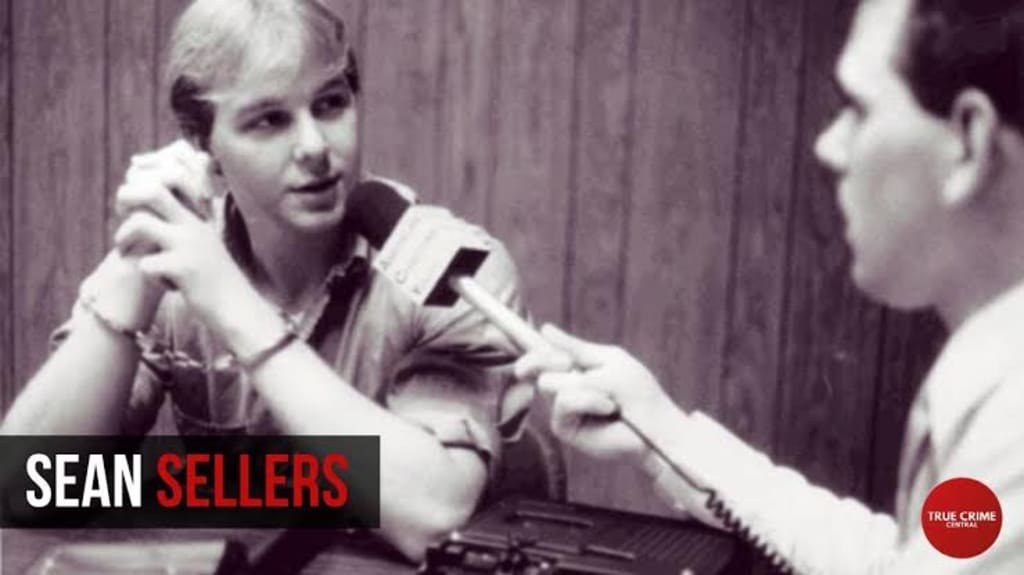Sellers: Juvenile Death Row
Sean Sellers, troubled youth, turned to Satanism, committing brutal murders. Legal debates around his execution sparked discussions on juvenile justice.

Sean Sellers, a deeply troubled individual, became a notorious figure in the United States due to his involvement in a series of heinous crimes, including multiple murders. His life story is a harrowing narrative of a troubled childhood, involvement in occult practices, and a violent descent into criminality. This summary provides an overview of Sean Sellers' life, his crimes, and the profound impact they had on the criminal justice system and public perception of juvenile offenders.
Born on May 18, 1969, in Fort Worth, Texas, Sean Richard Sellers experienced a tumultuous childhood marked by a range of adverse experiences. His parents divorced when he was young, and he faced abuse, neglect, and exposure to a variety of traumatic events. These early life experiences significantly shaped his worldview and behavior.
Sellers' descent into criminality was heavily influenced by his involvement in occult practices, particularly Satanism. He embraced a dark and macabre fascination with the occult, which eventually led him to commit a series of disturbing crimes. His criminal activities began when he was just 16 years old.
In 1985, Sean Sellers brutally murdered his parents, Robert and Vonda Sellers, while they slept in their home. Sellers' motivation for the murders was deeply entwined with his beliefs in Satanism. He later claimed that he believed killing his parents would earn him power and respect from Satan. This horrifying crime left a profound scar on his community and the criminal justice system.
Following his arrest, Sean Sellers' case became a focal point of legal and ethical debates surrounding juvenile offenders. At the heart of the controversy was the question of whether Sellers should be tried as an adult or receive a more lenient sentence due to his age and potential for rehabilitation. Ultimately, he was tried as an adult, found guilty of the murders, and sentenced to death.
In 1986, Sellers' life took another dark turn when he killed convenience store clerk Robert Bower during a robbery. This second murder further solidified his status as a notorious and dangerous criminal. Sellers' willingness to take another person's life in pursuit of his own desires was a chilling testament to the depths of his depravity.
While on death row, Sellers became a subject of significant media attention and a focus of various advocacy groups. His case reignited the debate about the execution of juvenile offenders and the appropriateness of the death penalty for individuals who had committed crimes as adolescents. The ethical and moral questions surrounding Sellers' execution contributed to the broader discourse on juvenile justice in the United States.
Over the years, Sellers' case became emblematic of the evolving understanding of adolescent brain development and culpability. Many argued that adolescents like Sellers, with their still-developing brains, were less responsible for their actions than adults and should be treated differently by the legal system. His case added fuel to the ongoing national discussion about the appropriate age at which individuals could be sentenced to death.
In 1999, Sean Sellers' case took an unexpected turn when he converted to Christianity while on death row. He claimed to have repented for his crimes and expressed deep remorse for the pain he had caused to his victims' families and the broader community. His transformation and embrace of faith raised further questions about the nature of redemption and the possibility of rehabilitation, even for those who had committed the most heinous acts.
Despite his conversion and expressions of remorse, Sellers' legal appeals were largely unsuccessful. He remained on death row for years, facing the imminent possibility of execution. Ultimately, he was executed by lethal injection on February 5, 1999, at the age of 29. His execution drew significant attention from both opponents and proponents of the death penalty, reigniting discussions about the ethical and moral implications of capital punishment for individuals who had committed crimes as juveniles.
The case of Sean Sellers is a complex and deeply troubling one, with significant implications for the criminal justice system, the death penalty, and the treatment of juvenile offenders. His troubled childhood, fascination with the occult, and brutal crimes made him a notorious figure. His conversion to Christianity while on death row added layers of complexity to the public perception of his character and the possibility of redemption.
In conclusion, Sean Sellers' life and crimes tell a chilling tale of a troubled childhood, involvement in the occult, and a violent descent into criminality. His brutal murders of his parents and a convenience store clerk led to his trial as an adult and subsequent execution. Sellers' case ignited significant debates about the ethics of executing juvenile offenders and the potential for rehabilitation, making it a pivotal point in the discussion of juvenile justice and the death penalty in the United States.
About the Creator
Enjoyed the story? Support the Creator.
Subscribe for free to receive all their stories in your feed. You could also pledge your support or give them a one-off tip, letting them know you appreciate their work.





Comments (1)
its quality writing and informative approach.